With AI being on everyone’s minds these days, it’s hard to deny the impact it has on our daily lives and business operations. Customer service is no exception – and why should it be? Embracing conversational AI tools in customer service operations means less manual work and fewer receptive tasks for agents, always-on support for customers, and reduced operational costs for businesses – a clear win-win for everyone!
Even though conversational AI is still in its early stages, let’s face it – it’s already transforming the customer service industry profoundly with tools like AI chatbots, virtual agents, and AI agent assist solutions. No wonder the market for conversational AI is literally booming.
According to Fortune Business Insights, the global conversational AI market is projected to grow from USD 12.24 billion in 2024 to USD 61.69 billion by 2032, exhibiting a CAGR of 22.4%.
In this blog, we’ve decided to take a closer look at what conversational AI is, how it works, how it can improve your customer service and CX, and what today’s consumers really feel about AI-powered customer service. Plus, we’ll try to answer the all-important question: Will AI replace human support agents?
What is Conversational AI, and How Does it Work?
So, what exactly is conversational AI? In a general sense, conversational AI is a type of Artificial Intelligence technology that enables software to understand and respond to text-based or voice-based conversations in a human-like way. In customer service, conversational AI is used in tools like chatbots, voice bots, and agent assist solutions to streamline customer service operations.
Conversational AI uses Natural Language Processing (NLP), Natural Language Understanding (NLU), Natural Language Generation (NLG) or Generative AI, and Machine Learning (ML) technologies to recognize speech and text inputs, understand context and user intent, and generate replies based on the information retrieved from the integrated knowledge sources and conversation flow. And these aren’t just robotic replies that we’ve all seen from interacting with early-age rule-based chatbots. Conversational AI solutions respond and interact with users through a natural dialogue, imitating human language.
The best part is that conversational AI software can constantly learn from past interactions and feedback to improve the accuracy and relevance of responses over time.
Recommended reading: Contact Center Industry Trends for 2025 and Beyond
Common Use Cases for Conversational AI in Customer Service
AI-powered Chatbots
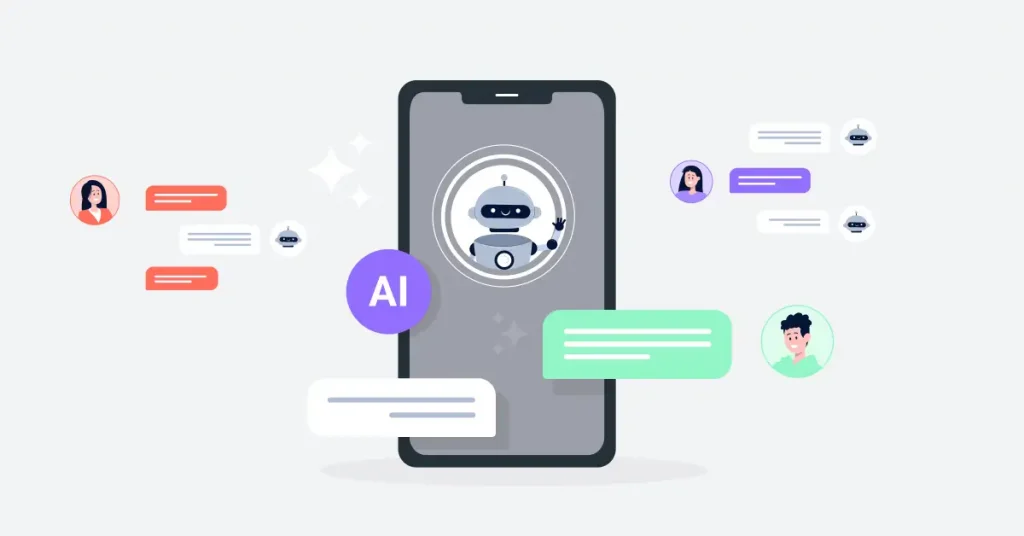
Conversational AI technology enables chatbots to handle customer interactions and deliver support around the clock. In the early days of simple rule-based chatbots that only frustrated users for the most part, customers would reach a dead end when the conversation deviated from the predefined chat flow. AI-powered chatbots are much better at handling unexpected situations and provide human-like responses, often making you feel as though you are interacting with a human rep.
AI chatbots can answer FAQs, guide customers to resolutions, troubleshoot simple issues, provide order updates, process transactions, handle returns and exchanges, upsell and cross-sell by offering relevant products, and do so much more. And many businesses are already taking advantage of AI chatbots to streamline their customer support operations. In fact, according to Intercom’s report, 45% of support teams are already using AI chatbots. Most of those teams also reported that up to 30% of their support requests are being successfully resolved by AI.
A report from Botco.ai also found that 76% of contact centers already leverage chatbot technologies, while nearly half (47%) of respondents said chatbots help their contact centers deflect between 20% and 30% of inbound calls.
Recommended reading: Enterprise Chatbots: Features, Benefits, and Common Use Cases
AI Voice Bots (Virtual Assistants)
Along with conversational AI chatbots, AI voice bots (also known as virtual agents or voice assistants) are also gaining tremendous popularity. Conversational AI voice bots can engage with users in human-like voice conversations, helping businesses reduce the number of human-assisted phone interactions.
Using Automatic Speech Recognition (ASR), NLP, NLU, NLG, text-to-speech, and ML technologies, AI voice bots can understand spoken language, interpret callers’ needs and requests, and provide contextually relevant answers in a human-like manner. Voice bots can also transition calls to human agents when needed while preserving the context of the conversation so human reps can easily pick up from where the voice bot left off and deliver a seamless customer experience.
Of course, just like AI chatbots, AI voice bots aren’t just there yet when it comes to handling complicated customer service scenarios. But for answering simple questions and handling basic requests, voice bots are excellent solutions that can improve customer support in inbound call centers.
AI Agent Assist Solutions
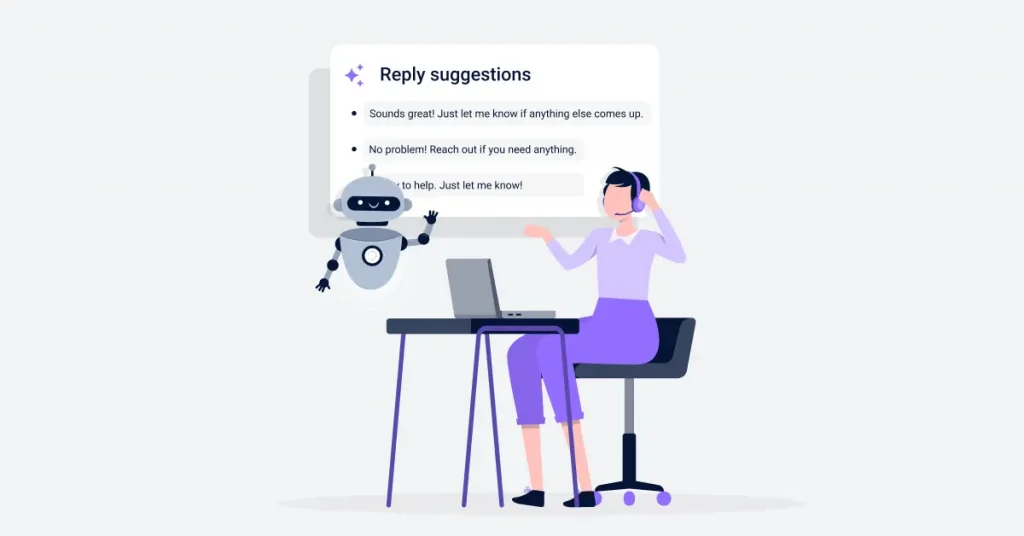
Another important use case for customer service conversational AI is AI agent assist tools. While these solutions may operate in a slightly different way based on the provider, they are generally aimed at providing agents with real-time reply suggestions, recommended actions, and guidance on how to respond to customer questions right when conversations are happening. They can also provide real-time transcriptions, summarize conversations, and automate post-call work.
These tools are incredibly helpful for customer service reps, especially considering how much time an agent typically spends searching for information – whether it’s product details, customer data from CRM, process documentation, pricing sheets, policies, etc. AI agent assist can automatically retrieve this information from all integrated knowledge sources and deliver it to agents in a matter of seconds based on the context of the conversation, without the agent having to ask for it.
The outcome? Agents are empowered to respond and resolve issues faster, helping you shorten hold times for customers, reduce the Average Handle Times, improve First Contact Resolution rate (FCR), and increase Customer Satisfaction Scores (CSAT).
Benefits of Using Conversational AI in Customer Service
Deliver customer support 24/7
According to Salesforce, 77% of customers expect to interact with someone immediately when they contact a company.
With conversational AI chatbots and voice bots, you can extend your customer service beyond the traditional 9-to-5 window and deliver customer support 24/7, even when your reps are not available. Though, of course, AI bots aren’t ready to handle every single customer conversation, they are still highly efficient when it comes to answering simple questions and resolving basic queries.
Here are just a few examples of what well-trained AI chatbots and voice bots are capable of:
- Responding to Frequently Asked Questions (FAQs)
- Guiding customers to relevant knowledge base content
- Providing order information and delivery status updates
- Handling returns and exchanges
- Assisting customers in making payments
- Setting and rescheduling appointments
- Booking and confirming reservations
- Renewing subscriptions
- Troubleshooting simple technical issues
What’s more, consumers may favor chatbots in certain scenarios.
Based on the chatbot stats published by Outgrow, 74% of consumers say they would choose a chatbot over a human agent to look for answers to simple questions, and 62% would rather talk to a chatbot than a human agent if the alternative were to wait 15 minutes for an answer.
Reduce the inbound call volume
Managing increased call volumes, whether predicted or not, without compromising service quality has always been a challenge for contact centers and call centers. When call volume increases, callers wait longer in queues, more calls are dropped before the caller even reaches a live agent, and customer satisfaction ultimately decreases. Besides, it also creates additional pressure for agents.
Implementing AI chatbots and voice bots is an excellent way for businesses to reduce their inbound call volumes and empower customers to resolve issues independently. And not only that. Agents get fewer calls with repetitive questions and more time to handle interactions that require a human touch, while bots handle routine inquiries without human intervention.
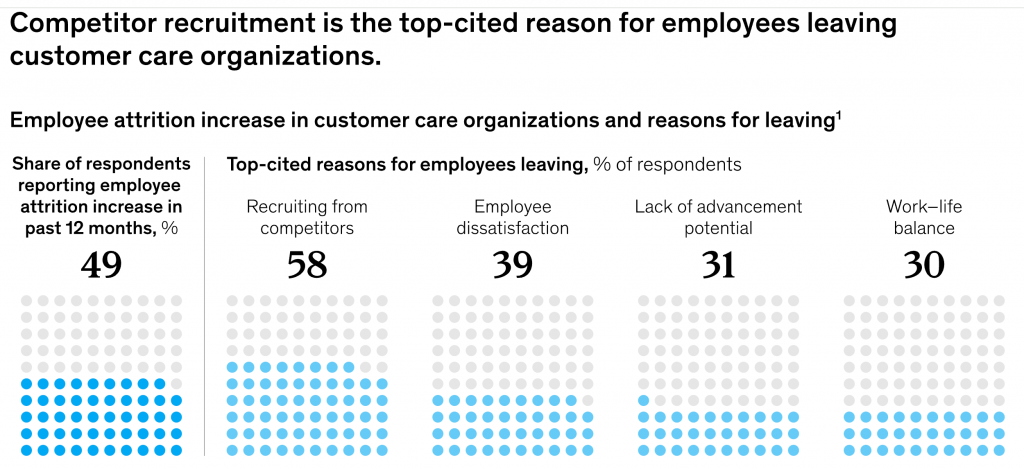
Reduce workload and prevent agent burnout
The increased workload that comes as a result of increased support volume is one of the major factors causing stress and burnout in contact centers.
According to Calabrio’s report, 96% of contact center agents are feeling acutely stressed at least once per week, while 1 in 3 agents say their biggest challenge is having to handle too many calls.
Workplace stress and burnout can negatively impact just about every metric, from agent satisfaction and engagement to the customer experience those stressed agents provide. Moreover, customer service reps with high levels of burnout are more likely to leave, increasing your turnover rates – and we know that turnover has always been extremely high in contact centers.
By automatically handling a significant portion of your support requests, conversational AI chatbots and voice bots reduce the workload for customer service teams, helping you prevent burnout and employee turnover.
Increase customer engagement and sales
Even though support teams were probably the earliest adopters of chatbots, conversational AI chatbots and voice bots aren’t just great for automating customer service processes. They can be effectively used to improve user engagement, generate leads, and increase sales through upselling and cross-selling.
Based on stats published by Intercom, sales is now the most common use case (41%) for chatbots.
Here are some stats on using chatbots for sales from Outgrow:
- Business leaders claim that, on average, chatbots have increased sales by 67%
- 55% of companies that use chatbots get more high-quality leads
- The conversion rate of chatbots in some industries can reach up to 70%
- Chatbots are used for upselling in about 20% of cases
There are several ways you can use AI chatbots for sales. For example, you can set proactive chat triggers and enable bots to initiate conversations with your website visitors when they are browsing your products, reviewing pricing plans, or finalizing their purchase. Chatbots can guide visitors through the buying journey, answer questions about products, or assist with the checkout process. AI chatbots can also analyze users’ browsing behavior and previous purchase history to recommend relevant add-on products, helping you increase the average order value.
Cut down on customer support costs
Lastly, AI chatbots and voice bots present a huge opportunity for businesses to cut support-related costs.
According to IBM’s report, AI-driven virtual agents can cut labor costs by reducing reliance on human intervention, leading to as much as a 30% decline in customer support costs.
Unlike human reps, bots are not constrained by working hours, public holidays, or time zones – and they never get tired. More importantly, while a human agent can physically handle only one interaction at a time, chatbots and voice bots can handle multiple simultaneous conversations, serving several customers at once 24/7, 365 days a week.
Recommended reading: How AI Benefits Customer Service and How it is Used in Contact Centers
How do Consumers Really Feel About Conversational AI?
This question doesn’t have a single straightforward answer, as customers’ opinions often differ. While some increasingly prefer to interact with AI chatbots to get quick answers to their questions and resolve simple issues, others aren’t yet 100% comfortable with using AI technology and would still prefer to get support from a human rep. Let’s take a closer look at what various research studies have recently found:
According to the Zendesk Customer Experience Trends Report 2024, 51% of consumers prefer interacting with bots when they want immediate service, while 56% believe bots will be able to have natural conversations by 2026.
At the same time, as AI bots are getting more intelligent and sophisticated, 48% of customers say it’s harder to tell the difference between AI and human service reps.
Based on Salesforce research, 55% of consumers have used self-service chatbots, but 68% say they wouldn’t use a company’s chatbot again if they had a bad experience.
Moreover, 89% of consumers stated that it’s important for them to know when they are interacting with AI or a human agent, 63% are concerned about bias in AI, and only 37% trust AI to be as accurate as a human.
According to the Achieving Customer Amazement Survey Report from Shep Hyken, 73% of consumers have used chatbots and other self-service tools to handle issues before contacting a live rep, but only 32% have successfully resolved a customer service issue using AI.
Additionally, 63% are frustrated by AI-based self-service tools, 56% admit to being scared of technologies like AI and ChatGPT, and 75% are concerned about the privacy and security of their data when interacting with AI-based customer service technologies.
The AI in Customer Service survey by Callvu revealed that 81% of consumers would wait to speak with a live agent for at least a few minutes versus engaging with an AI assistant immediately.
On top of that, 65% of consumers rated live agents higher than AI chatbot assistants for understanding complex problems better. However, AI bots are rated slightly higher than human reps for accuracy of information, speed of response, and patience.
Based on SurveyMonkey’s report, 90% of people prefer to get customer service from a human agent rather than a chatbot, 61% believe human reps understand their needs better than AI, and 52% say human agents are less likely to frustrate them.
That said, among the 10% who prefer interacting with chatbots over humans, 41% say chatbots offer better availability, while 37% say chatbots are able to address issues faster.
Finally, according to Intercom’s Chatbot Trends report, 74% of consumers expect chatbots to be available on a website, yet, 87% still prefer human support agents to chatbots for quick interactions.
At the same time, 25% of customers said they wouldn’t care if they’re talking to a human rep or a chatbot as long as they get to their desired outcome.
To sum it up, more consumers are getting used to interacting with conversational AI technologies, but there’s still room for improvement. While people would rather use AI chatbots to get answers to simple questions, when it comes to resolving complicated issues, the majority would still prefer to interact with a human rep, even when it means having to wait. And many still have concerns about the limitations of AI-driven self-service tools, including bias and data security, among others.
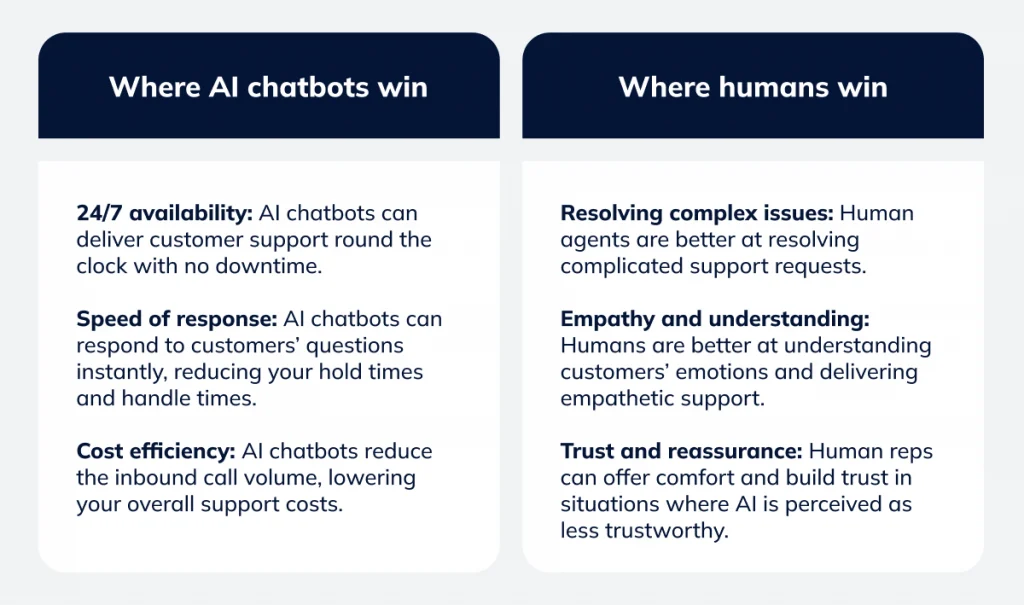
Will Conversational AI Replace Human Customer Support Agents?
So, will AI put service jobs at risk and replace human support agents in the foreseeable future? This is the question that has probably been a major concern for everyone working in customer service. But fortunately, things aren’t as bad for service reps.
Although according to the Goldman Sachs report, AI could replace the equivalent of 300 million full-time jobs, most CX leaders agree that customer service jobs will be augmented and automated but not entirely replaced by AI.
Using conversational AI for customer service has undeniable benefits – from automating low-level support and reducing the burden on support reps to lowering support costs and everything in between. But as we’ve seen from the stats above, AI isn’t just there yet when it comes to delivering satisfactory customer experiences in every interaction. As much as consumers want speed and efficiency, they also want someone who understands their needs and emotions. And it’s the human reps who can provide that critical element – empathy.
After all, customer service isn’t only about answering customers’ questions. It’s about creating positive brand experiences, building connections, and delivering the level of personalization AI bots aren’t capable of.
That’s why we believe AI is an enhancement to customer service, not a replacement. AI-powered tools will allow agents to focus on the human side of customer service, like working through complicated issues, delivering empathetic and personalized service, and building relationships – while AI will do the rest, relieving human reps from many repetitive tasks.
Best Practices for Using Conversational AI in Customer Service
Be transparent and honest with customers
We’ve already mentioned that earlier – as AI conversational chatbots are becoming more advanced and intelligent, some people find it harder to tell the difference between AI agents and human reps. The fact that AI bots are now able to interact with consumers in a natural, human-like way isn’t a bad thing, of course. But think about how frustrating that might be for your customers to start an interaction being sure they’re talking to a human rep just to find out a few minutes later that they were actually interacting with AI.
To avoid this frustration and disappointment, make sure to be honest and transparent with your customers about who (or what) they are going to interact with.
Have a comprehensive internal knowledge base
Your internal knowledge base is the foundation for your conversational AI tool to source information from. If your knowledge base is too generic and incomplete, your chatbot won’t be able to deliver accurate and relevant responses and answer all types of questions your customers may have. Before implementing a conversational AI chatbot solution, take the time to create a comprehensive, detailed knowledge base with all the information about your products, services, troubleshooting processes, policies, and anything else your customers might be looking for.
Beyond creating a knowledge base and integrating your AI bot with your internal knowledge sources, it should be able to integrate with your other existing business systems, like CRM systems, e-commerce platforms, payment gateways, marketing automation tools, etc.
Always provide a pathway to a human
Some people aren’t comfortable interacting with AI; others may simply need a human on the other side to resolve a sensitive issue. In fact, there may be a lot more reasons why a customer might prefer to speak to a human agent over a virtual bot. Being unable to do it can be extremely frustrating – and we all know that even a single negative experience can have a significant negative impact on customer satisfaction and loyalty.
Whatever the reason, make sure to give your customers an opportunity to be connected to a human rep if they’re not satisfied with the answers your chatbot provides. Luckily, AI bots would typically pass along information the customer already provided, giving agents the full context.
Collect customer feedback and analyze chatbot performance
One distinctive feature of conversational AI chatbots and voice bots is that they can learn from past interactions, improve their responses, and become more efficient over time thanks to machine learning capabilities. When customers interact with AI bots, responses are collected as data. And when they provide feedback through customer satisfaction (CSAT) surveys by rating the chatbot’s answers, the bot’s algorithms use this information to improve future responses.
In addition to collecting customer feedback and measuring CSAT scores, you can track a variety of other metrics to evaluate the performance of your conversational AI bot and understand where improvements are needed. These are, for example:
- User engagement (the percentage of users who interacted with your AI chatbot)
- Resolution rate (the percentage of queries that were successfully resolved by the bot without needing human intervention)
- Escalation rate (the percentage of interactions that were handed off to human agents)
- Bounce rate (the percentage of users who quit the chat session without completing an interaction), and more.
Improve Your Customer Service and CX with VoiceSpin’s AI-driven Solutions
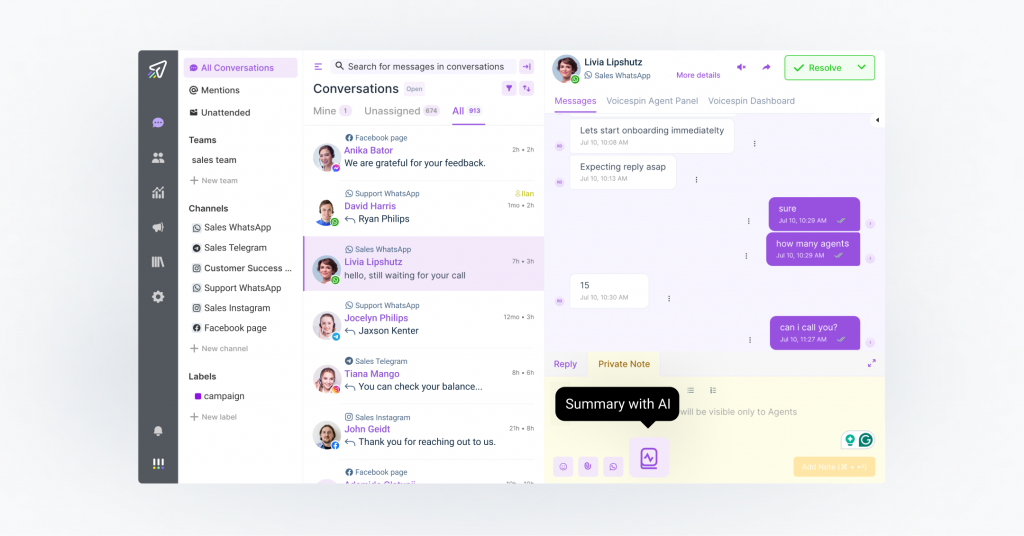
Conversational AI is definitely one of the most impactful technologies transforming the way businesses communicate with customers and deliver customer service. And, most importantly, a conversational AI solution can make life easier for both your customers and your CX team. If you’re considering implementing conversational AI and other AI-driven technologies into your customer service processes, we’ve built a range of AI contact center solutions you can go with:
- AI Messaging: VoiceSpin’s AI Messaging allows you to unify multiple digital communication channels (including email, live chat, social media, and WhatsApp) into one AI-first communication platform, manage customer interactions across all connected channels from a single omnichannel inbox, and deliver a seamless CX regardless of what channels customers use.
- AI voice bots: An AI voice bot can answer your inbound calls whenever your agents aren’t immediately available, provide accurate information, and help your customers get answers to their questions whenever it’s most convenient for them. The bot can also qualify your inbound leads, ensuring no opportunity slips through the cracks.
- AI Chatbots: By integrating VoiceSpin’s AI chatbot and training it on your knowledge sources, you can deliver customer support 24/7 and enable your customers to get the information they need and resolve basic issues independently while freeing your team up to focus on handling more complex inquiries that require a human touch.
- AI Reply Suggestions: With AI reply suggestions, you can empower your team to respond to customer requests faster and increase the overall speed of support. The AI assistant improves your replies or generates them from scratch based on the context of the conversation, saving your reps time and effort.
- AI Conversation Summary: Reduce the workload on your QA team with AI conversation summaries. Capture the essence of each conversation (whether voice or digital), including key points, outcomes, script compliance, action items, and more, and enable your team to assess the quality of interactions without having to go through the entire dialogue.
- AI Speech Analytics: Automate and optimize your call center quality monitoring process with an AI Speech Analyzer. Monitor 100% of your calls, save your QA team hundreds of hours, measure agent performance, identify potential coaching opportunities, and prevent costly non-compliance issues before they turn into bigger problems.
Book a demo call now to learn more about VoiceSpin’s AI contact center software solutions and how they can help you automate your customer support operations, improve customer experience, and make your support reps more efficient and productive.

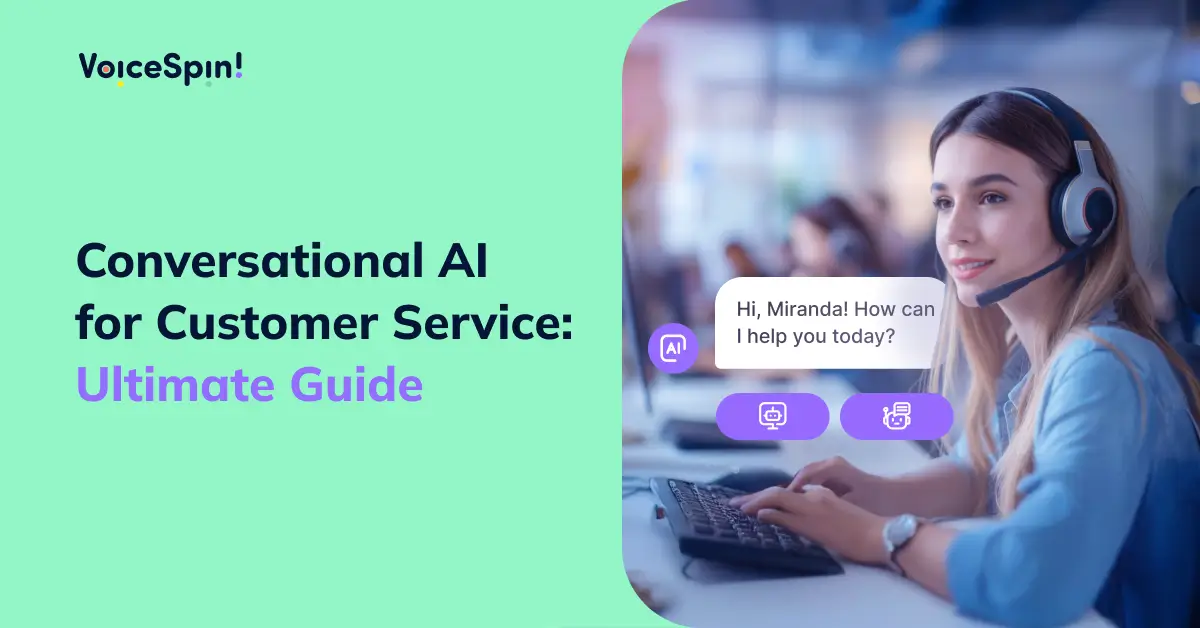
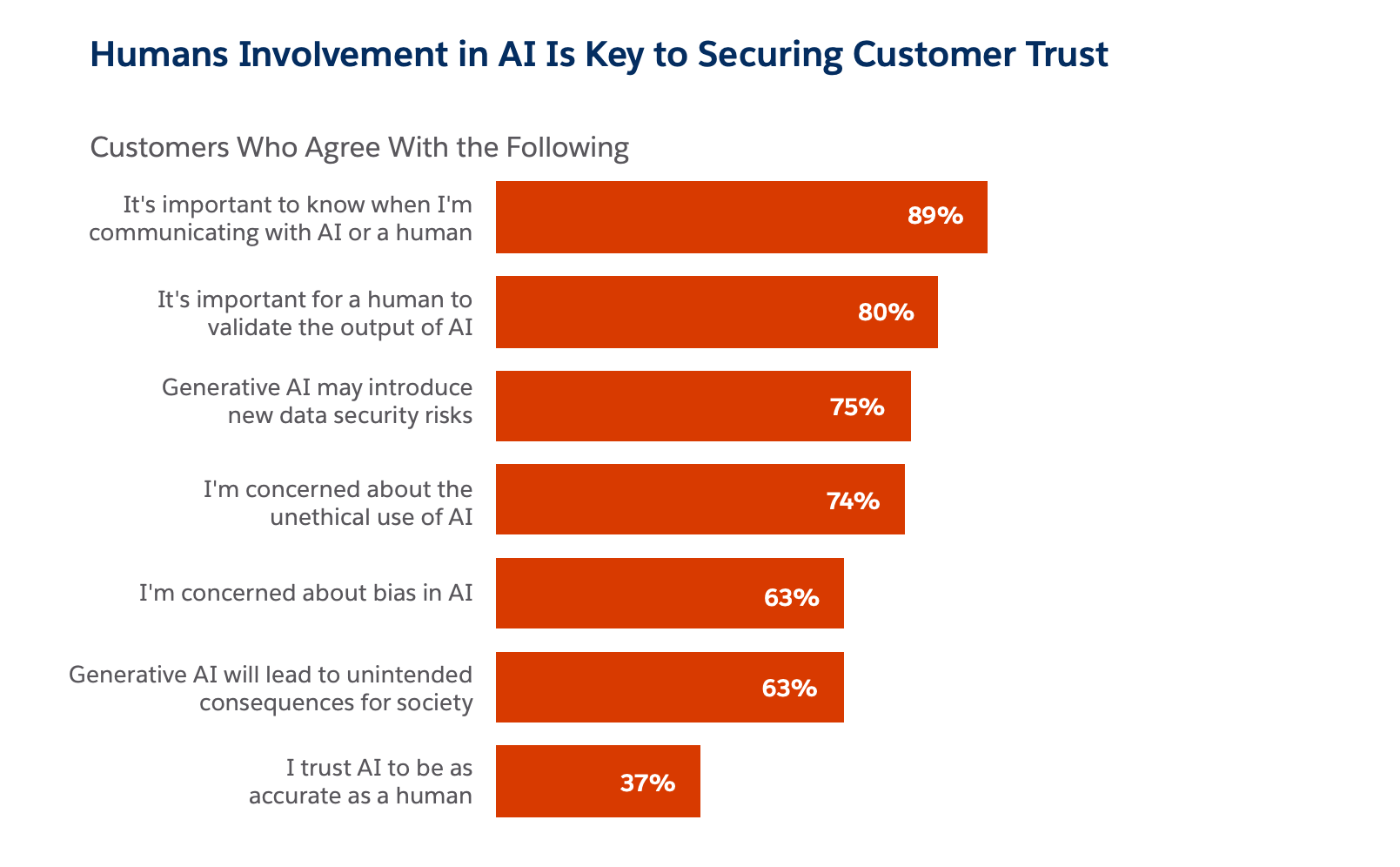


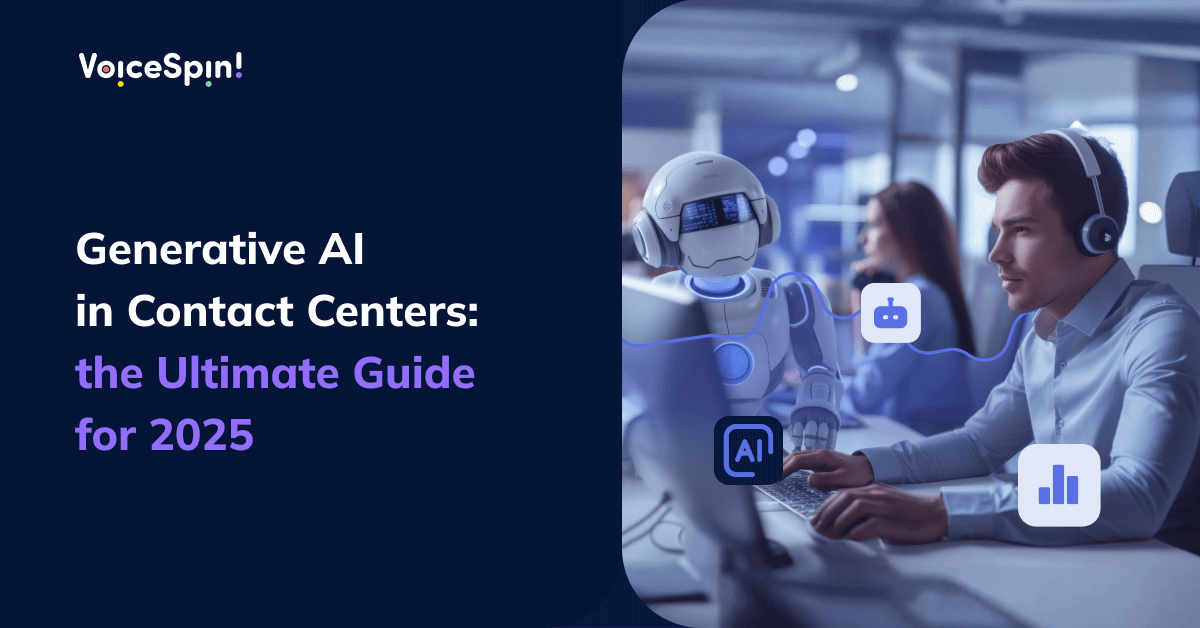
 +18889082995
+18889082995
 +442036084160
+442036084160
 +97237237006
+97237237006